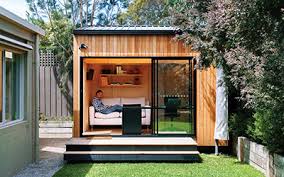Accessory Dwelling Units (ADU’s)

We can all agree that there is a housing shortage, especially in California. The State legislators are writing laws to increase the housing stock. 2020 saw the passage of a bunch of Bills, which amended the Government and Civil Codes to remove barriers to the development and use of ADUs and Junior ADUs (JADUs).
Although the State regulations do not have many specifics for what is required within an ADU, the ADUs and JADUs are intended as independent living/rental units. State law, California Health and Safety Code, 65583(c)(7) requires cities and counties to develop a plan that incentivizes and promotes the creation of ADUs. If a local jurisdiction does create a specific ordinacne, then state law will apply.
Housing and Community Development (HCD) as a published downloadable handbook (Dec. 2020) available at this link: ADU Handbook. This law essentially eliminates the R-1 zone and permits every single family lot to have ADU and a JADU. An ADU can be within an existing dwelling (converted space), attached or free standing.
The following are State established rules for ADUs, detached units:
- Number: Permits a maximum of one ADU and one JADU per lot.
- Requires a separate entry from primary dwelling.
- Size: The State does not establish any maximum or minimum sizes for an ADU. This is left up to local jurisdictions, but the State says the maximum size cannot be less than 850 SF for a one-bedroom or 1,000SF for more than one bedroom.
- Note: the size of an ADU could be limited by water and sewer services adequacy. Also, impact on traffic flow and public safety may be considered. THese are left up to local jurisdictions.
- The maximum size for an attached unit is limited to 50% of primary dwelling, except for existing converted structures (barns or garages).
- Conversions of garages, carports or covered parking does not require replacement of offstreet parking by local jurisdictions. See below for more on parking.
- From January 2020, detached ADUs up to 800SF and 16 feet high/tall are permitted without any local discretionary approvals, in other words, permits cannot be denied.
- Setbacks for new ADUs are a minimum of 4-feet for side and back.
- Living space is required to be a minimum of 70 SF, Kitchen 50 SF and bath 30 SF with a toilet, sink and shower or tub.
- Utilities: electrical and water may be shared with the primary dwelling, separate metering may be desired for rentals. Sewer cannot be shared and must connect downstream of the primary dwelling.
- Solar is required for newly (detached) ADUs. There are exceptions.
- Fire Sprinklers : Sprinklers are required, if the primary dwelling unit has a fire sprinkler system.
- Fire Access: State standards do not address specific fire department access requirements. This is best discussed with the local fire district. A jurisdiction may require street access for firefighters and emergency response teams. Access to fire fighting water supply (hydrants) may be considered.
- JADUs are created from within the existing dwelling, Max of 500 SF with a maximum 150 SF addition to the editing dwelling.
- Parking: Originally, one parking space per unit or per bedroom (whichever is less) is required if you are located more than ½ mile from public transit. The latest rules may exempt parking for ADUs created within an existing structure, like a garage or carport if permitted by local ordinance. Additionally, no replacement parking is required for the main residence when a garage or carport is demolished or converted to create an ADU.
- Accessibility – Accessibility requirements found in Chapter 11A/Dwellings, could apply to ADUs. The key is the three or more unit rule. An existing single family dwelling with an added ADU is only a duplex or two units, Chapter 11A would not be triggered. If there is an existing duplex and an ADU is added, although it is three units, it still does not trigger Chapter 11A, because the ADU does not meet the definition of a covered multifamily dwelling. If you build a new duplex plus an ADU as multi-family dwelling, then this is three new units and does trigger compliance with Chapter 11A for dwelling accessibility. The exception is if they are considered condominiums. This part is confusing at best.
Many local jurisdictions have adopted ordinances to supplement the State requirements and establish further details for the design and construction of ADUs and JADUs. Some jurisdictions have chosen to be more specific on the State requirements. It is best to check with the local Building and/or Planning for specific requirements for the area.
By Kerwin Lee, AIA, CASp (inactive)



